Hiking its entire length is not only great exercise but also provides a fantastic insight into the life and times of this tenacious, irrepressible metropolis.
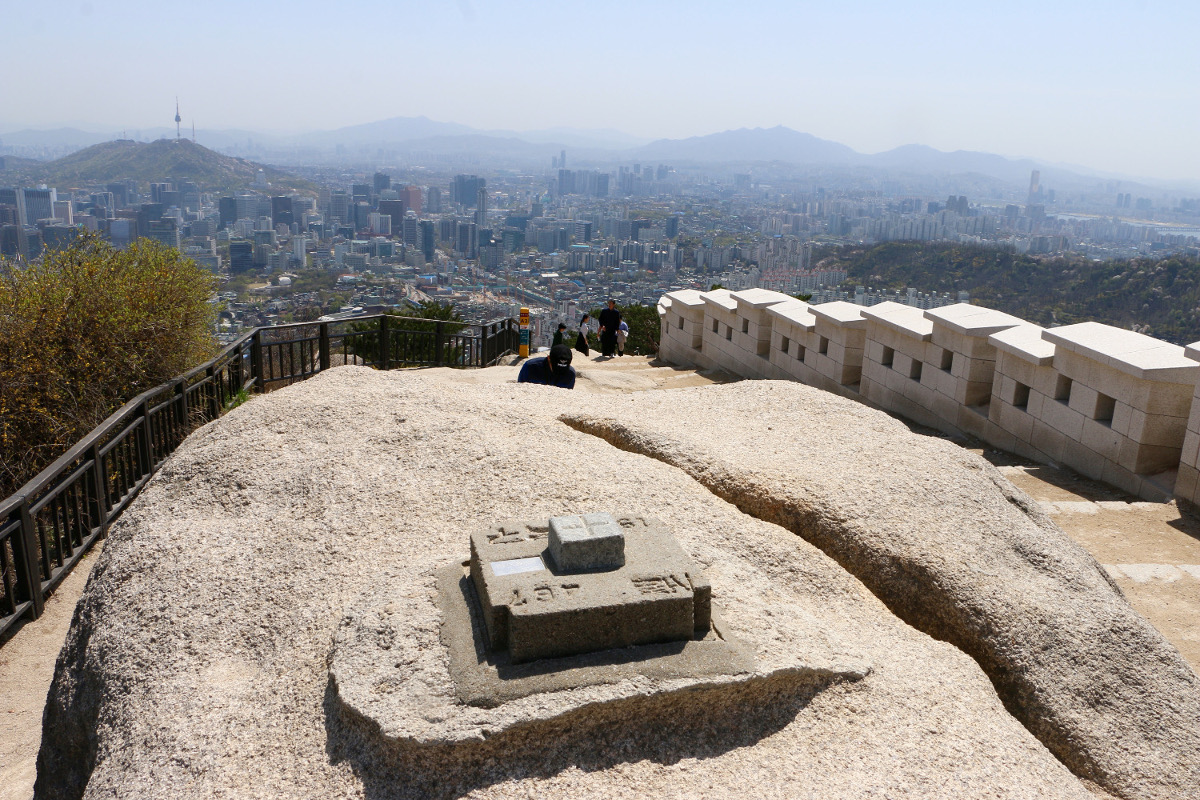
So don your hiking boots and fill your lungs with fresh air on this walking tour of Seoul's ancient city wall.
Initially built in 1396 under the orders of King Taejo, founder of the Joseon dynasty, Seoul City Wall was punctuated by four major gates and four sub-gates, of which six remain. The daily opening and closing of these gates – signalled by the tolling of the giant bell at the Bosingak belfry at Jongno – regulated comings and goings in the capital.
Dongdaemun – the Great East Gate and location of one of the city’s newest architectural wonders, Dongdaemun Design Plaza is a good starting point. Walk north alongside the wall to the Seoul City Wall Museum (283 Yulgok-ro, Jongno-gu), which has high-tech interactive displays and solid historical background and information about the city’s efforts to have the wall designated a World Heritage site. Currently, some 70% (12.8km) of the wall, which measures between 5 and 8m high, has been restored or rebuilt.
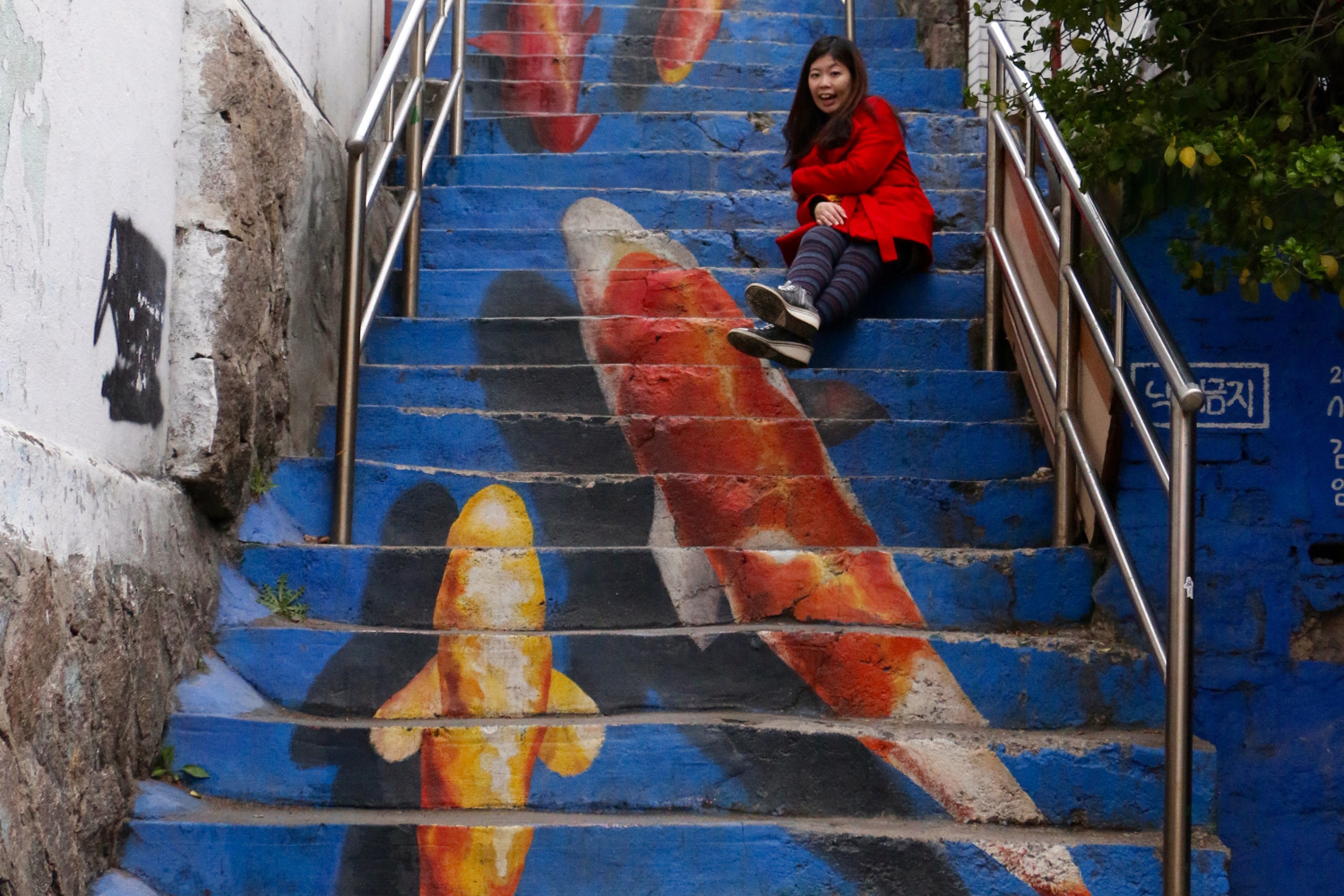
The wall, which once marked the boundary between the city and countryside, is now hemmed in by Seoul’s inner suburbs, including Ihwa Maeul, one of the city’s old daldongnae (literally ‘moon village’), which is the next spot on the hike up the crest of Naksan. These moon villages, so named because residents had a great view of the moon from their hovels high on the hillside, were home to refugees after the Korean War.
Sixty years later, Ihwa Maeul has become a tourism hotspot thanks to a growing collection of quirky sculptures and colourful murals painted on walls along its steep stairways and alleys. It’s so popular that it pays to visit here early in the day to avoid the mobs of selfie stick-toting tourists.
Continuing on the circuit, you next reach Bukaksan. This, the tallest of Seoul’s four guardian peaks, was off limits to the public for 38 years following an assassination attempt by North Korean agents on then-President Park Chung-hee in 1968 (the presidential compound Cheongwadae is at the foot of the mountain). Security remains tight and visitors need to show a passport to gain access to this spectacular 2.5km section of the wall, which is open only during daylight hours.
Photography is restricted to designated spots only, such as Baekakmaru, the summit viewpoint. The plain-clothed security forces and CCTV cameras every twenty paces offer a vivid sense of the wall's original purpose as the city’s last line of defence. After the steep descent to Changuimun, breaking for a filing lunch of superior dumplings at nearby Jaha Sonmandoo and a caffeine kick from the excellent coffee at Club Espresso is necessary.
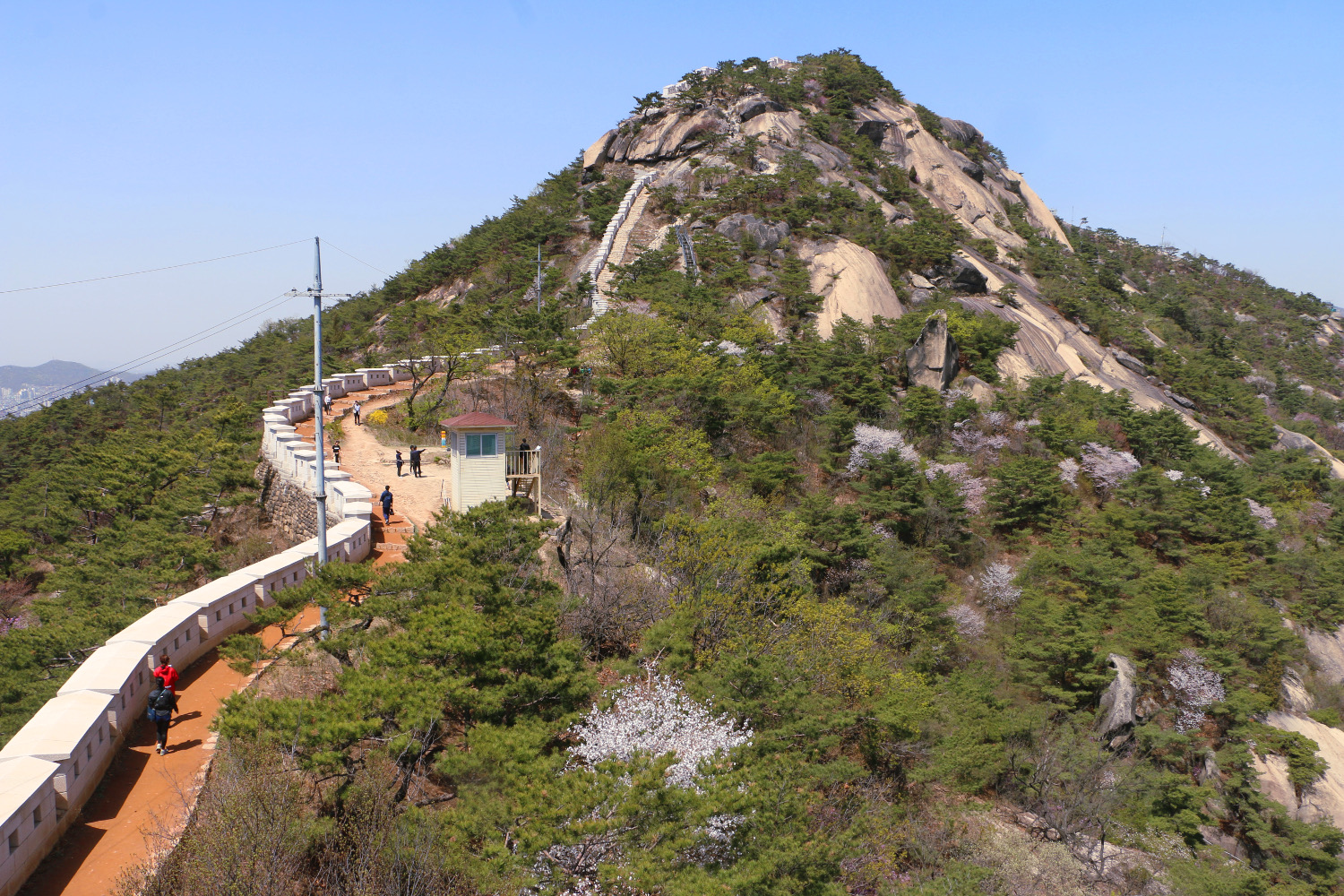
After Bukaksan, the section of the Seoul City Wall is that over Inwangsan. The enigmatic Seonbawi (Zen Rocks) here are said to look like two praying monks, and, lower down the slopes is the Inwangsan Guksadang, Seoul’s most famous shamanist shrine. On any given day, you may witness gut, sacrifices to the spirits made by mudang (shamans), who are usually female. The shrine, which has been here since 1925 following the destruction of the original one by the Japanese, has turquoise painted doors. Nearby is the Buddhist temple Seonamjeong marked by a bell pavilion and gates painted with a pair of traditional door guardians.
Next, there is a large gap in the original route of the wall (beyond Woram Park), but the circuit continues at the junction with Chungjeong-ro. Here, a wood and glass terrace marks the site of the long-demolished sub-gate, Donuimun. By this point, you're re-immersed in contemporary Seoul, but careful inspection reveals several fragments of the wall, including Sungnyemun, more commonly known as Namdaemun. This, the Great South Gate, is in grand form following a full reconstruction after a being engulfed by fire in 2008.
Back up the hill, a contemporary reconstruction of the wall rests on the lower slopes of Namsan. Amid the hoopla at the summit – which includes N Seoul Tower (the city's most visible landmark) and regular shows of traditional Korean dance and circus-style acts – the Bongoodae, 500-year-old stone signal beacons used during the Joseon dynasty, hide peacefully.
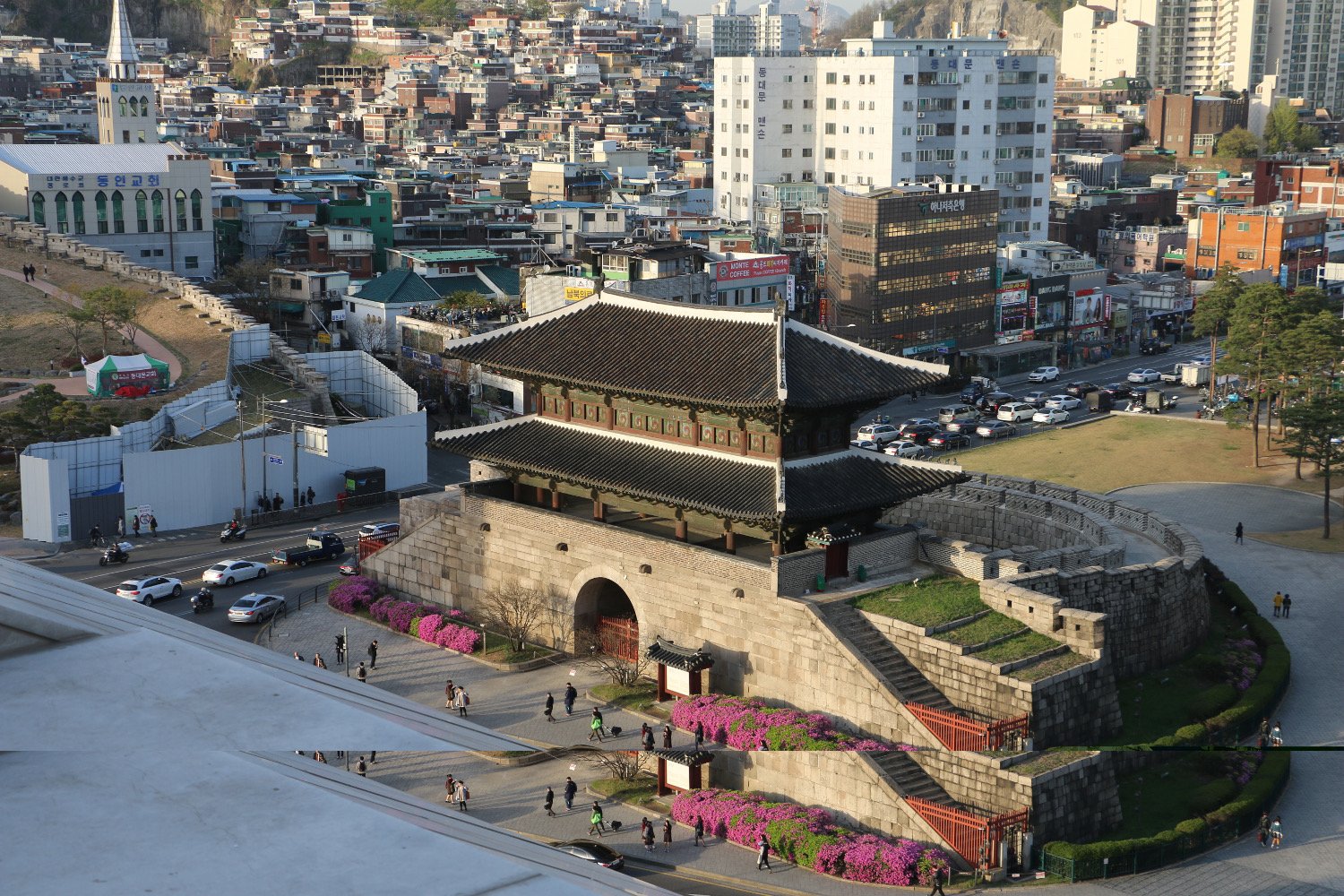
Reaching the bottom again requires descending Namsan by following the wall towards the National Theatre of Korea. Cross the main road here and follow the signs through the compound of the Banyan Tree Club and Spa to rejoin the remains of the wall past the sculpture park surrounding the Shilla Seoul. You can hunt down a few final fragments of the wall within the quiet backstreets near the sub-gate Gwanghuimun.
The curvaceous, aluminium-clad exterior of Dongdaemun Design Plaza signals the final stretch of the circuit. Hikers with leftover energy will find this Zaha Hadid-designed complex and attached park well worth exploring. Alternatively, rest your feet over a congratulatory beverage in the Griffin Bar at the JW Marriott Dongdaemun Square, where the 11th floor balcony provides a stunning view back to the circuit's starting point.
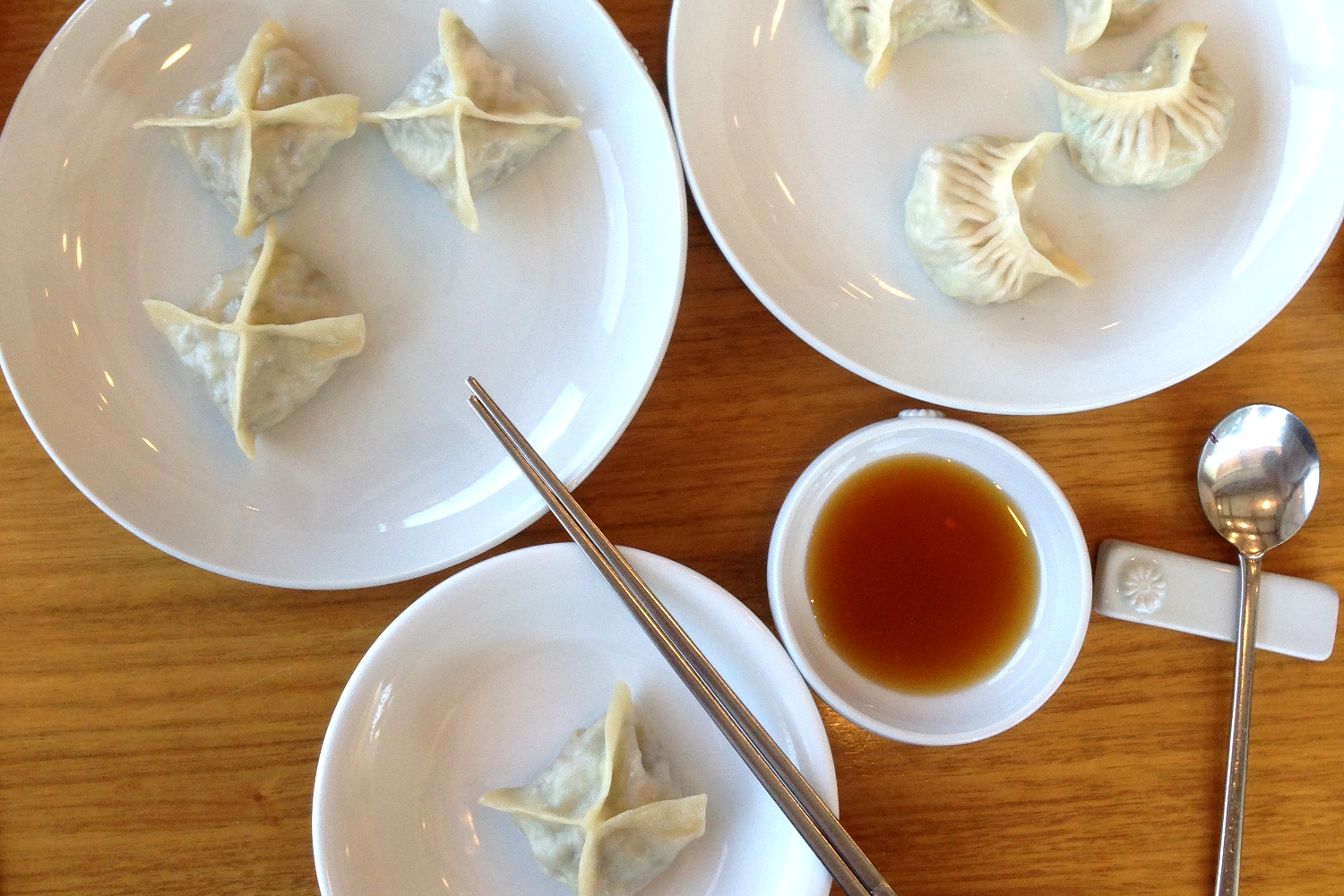
A walking tour of Seoul City Wall can be accomplished in a day, but is better split over two so you can take your time and do some sightseeing. Walking in an anti-clockwise direction from Dongdaemun allows you to get the steepest sections up and down Bukaksan out of the way in the morning, so you can linger on Namsan later in the afternoon. For a route map and more information, check out the Seoul City Wall website .